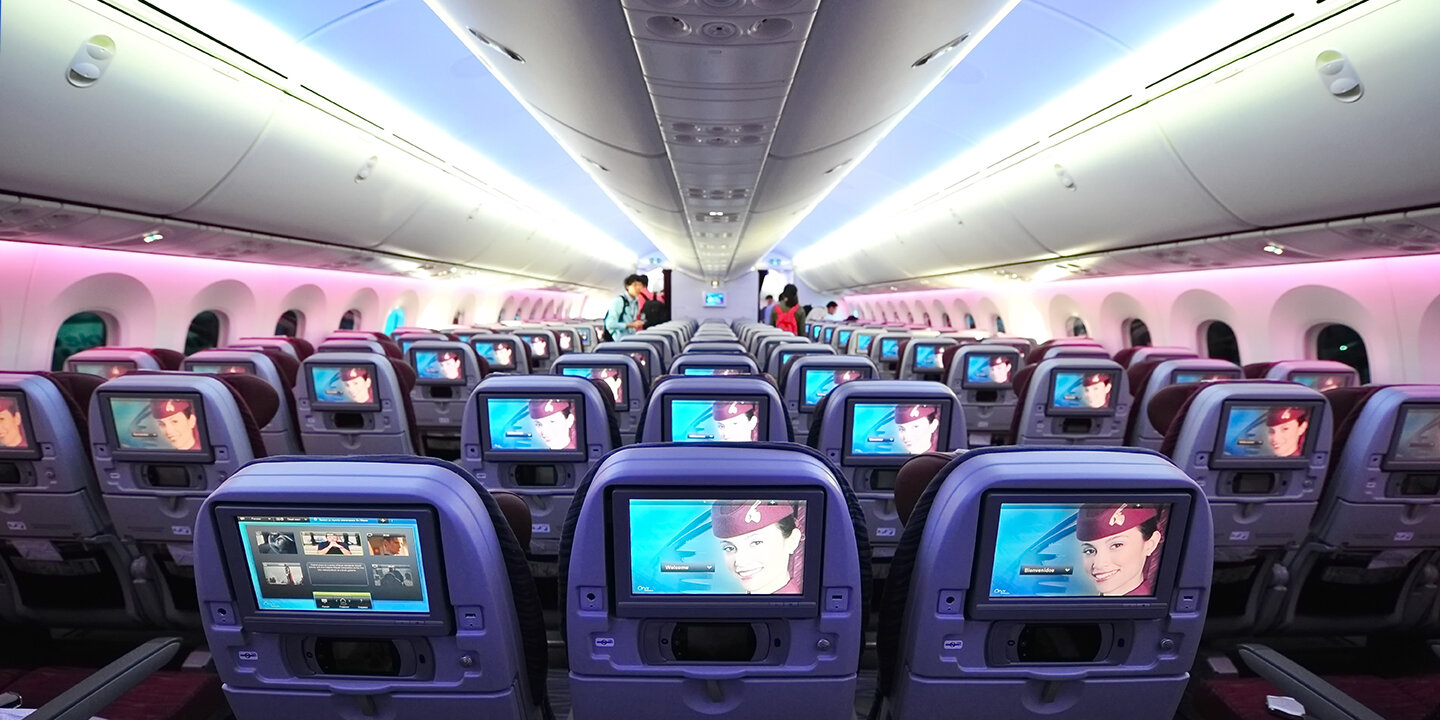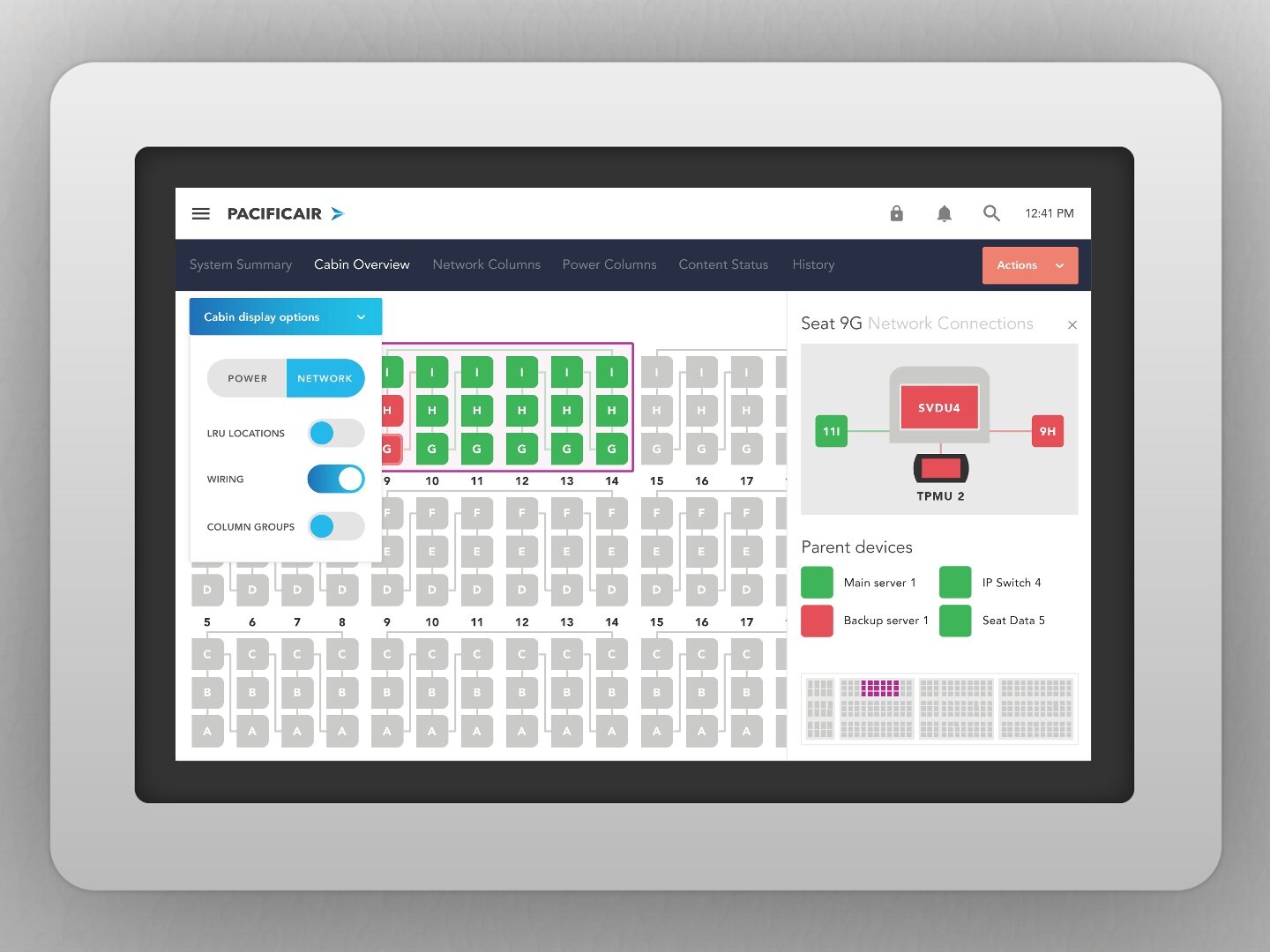
Reimagining the backend UX of in-flight entertainment
We redesigned an IFE system backend to promote better service, fewer delayed flights, and happier passengers.
A global leader in avionics approached Artefact to reimagine the back-end interface for their in-flight entertainment system (the seatback displays where you can watch movies and the like).
When something goes wrong, passengers can be stuck with a dead console. Unresolved problems can lead to delayed flights and broken service contracts with airlines.
We needed to create a back-end user experience that helped maintenance technicians resolve problems more efficiently and empowered flight crews to spend less time managing the system and more time providing service to passengers.
Role: Research lead on a team of 3
Duration: 4.5 months
Output:
Interactive InVision prototype wireframes detailing overall system architecture through key scenarios
Key research findings supporting design decisions
Comparative study showing improvement against key metrics
As research lead, I was responsible for…
Planning and leading all research activities
Collaborating with designers to create interactive prototypes that reflected insights
Presenting final research and design deliverables to the client
Approach
Contextual inquiry
We shadowed users to best understand workflows in-context
Design
Wireframes were designed around core scenarios
Iterative Testing
RITE (Rapid, Iterative, Testing & Evaluation) studies with users informed design revisions
Comparative study
We benchmarked the existing system and compared our prototype to it.
“The reality is, we’re not going to get to every plane that needs work.”
-Maintenance Technician
We shadowed technicians as they resolved issues on planes to understand key workflows and needs from the interface.
The original interface was something engineers cobbled together to suit their own needs back in the lab, rather than for the flight attendants trying to provide good service and the troubleshooting workflows of field technicians. We shadowed technicians as they performed maintenance on planes and spoke with flight crews to understand the workflows that a new UX ought to prioritize.
We brought the client into the synthesis process to inform initial design exploration, and refined the design through iterative testing with users.
Rapid Iterative Testing & Evaluation (RITE) involves adjusting the design throughout user evaluation as opposed to waiting until the end of the study to make any changes.
Client synthesis workshop
Iterative design & evaluation with users

“It actually gave you information of what you're seeing. On the [current system] you had to build that information in your head and hold that information when you go into other screens.”
-Maintenance Technician
We optimized for efficiency of the maintenance interface by prioritizing key workflows and grouping relevant information all in one place for troubleshooting.
Our time on the LAX tarmac uncovered how troubleshooting required piecing together information spread across multiple nested screens, the value of visualizing the system when troubleshooting, and how much maintenance time was wasted waiting for the system during resets or to perform diagnostics.
The reimagined maintenance interface minimized time spent waiting for the system, visualized component relationships to aid troubleshooting, and promoted workflows reflecting how maintenance technicians worked.
The original maintenance interface shows system status, but it does not reflect how some errors are likely causing others.
The redesign maintains the information of the original UI while highlighting the issues that are likely to be causing cascading faults and should be addressed first. Note also how it refers to system elements in plain language in addition to their technical codes for a smoother learning curve.
The redesigned flight crew experience surfaced common functions and introduced linear playlists for pre-flight, takeoff, and landing so that they could focus on providing services to passengers rather than managing announcements.
We discovered how linear and predictable most of the flight crew’s interactions with the system are over the course of a flight, and the rest were sporadic customer requests buried deep in the current interface that we surfaced in the revision.










